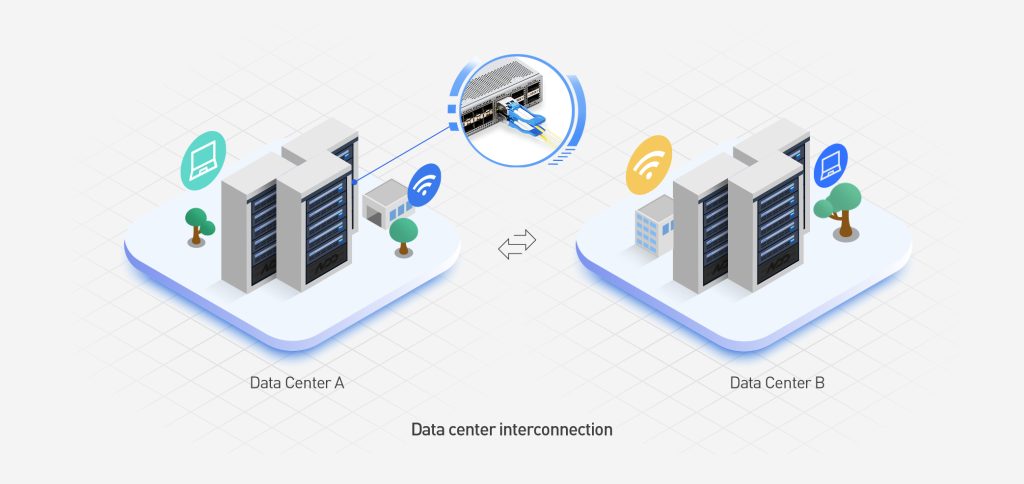As data demands soar, organizations increasingly need to connect data centers not only within the same facility but also across cities and even regions. The rising adoption of cloud computing, disaster recovery strategies, and real-time data replication requires interconnections that can deliver both high bandwidth and reliability over extended distances. Among the many optical transceivers available today, the 100G ER4 module has become a critical enabler of long-haul data center interconnect (DCI), offering robust performance for links up to 40 kilometers.
What is 100G ER4
The 100G ER4 is an optical transceiver designed for 100 Gigabit Ethernet transmission over single-mode fiber (SMF). It operates at the 1310 nm wavelength band and uses four parallel lanes of 25 Gbps, multiplexed into a single 100G signal. Unlike shorter-reach options such as SR4 or LR4, the ER4 supports transmission distances of up to 40 km without the need for optical amplification or dispersion compensation, making it ideal for interconnecting geographically distributed data centers.
Why Long-Distance Interconnect Matters
Modern enterprises and service providers often maintain multiple data centers spread across a metropolitan or regional footprint. Key drivers for long-distance interconnect include:
Disaster Recovery and Business Continuity: Maintaining geographically separated backup facilities ensures resilience against localized outages.
Cloud and Edge Computing: Connecting edge nodes to central data hubs requires high-capacity links.
Data Replication and Storage Synchronization: Real-time replication demands low-latency, high-bandwidth connectivity to ensure consistency across sites.
For these applications, the ability to transmit 100G over 40 km with minimal error rates is essential.
Advantages of 100G ER4 in Long-Haul DCI
Extended Reach: The most obvious benefit is the ability to span up to 40 km without complex optical add-ons. This makes ER4 well-suited for inter-city or regional links.
High Bandwidth with Low Error Rates: ER4 modules are designed to maintain strong signal integrity across long distances, ensuring minimal bit error rates (BER). This is crucial for latency-sensitive applications such as financial services or real-time analytics.
Cost Efficiency Compared to Alternatives: While solutions like DWDM systems or coherent optics can achieve even greater distances, they are often significantly more expensive and complex to deploy. ER4 fills the gap by delivering reliable 100G performance at a fraction of the cost.
Compatibility with Standard Infrastructure: ER4 modules operate over standard single-mode fiber widely deployed in metro and regional networks, which means enterprises can leverage existing infrastructure without major upgrades.
Application
Inter-City Data Center Connections: Enterprises with facilities in neighboring cities can rely on ER4 modules to build high-capacity links without resorting to more costly long-haul solutions.
Cloud Provider Metro Networks: Cloud service providers often need to connect multiple sites across a metro area. ER4 offers a balance of distance, performance, and cost.
Enterprise Business Continuity Planning: Organizations can replicate data between core and backup facilities seamlessly using ER4 links.
Conclusion
The 100G ER4 optical module plays a pivotal role in enabling long-haul data center interconnects. By supporting up to 40 km of transmission on single-mode fiber, ER4 bridges the gap between short-range solutions like LR4 and highly specialized long-haul coherent optics. Its ability to deliver high bandwidth with low error rates makes it invaluable for enterprises and service providers building resilient, high-performance networks across cities and regions.

